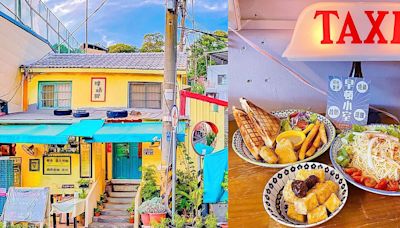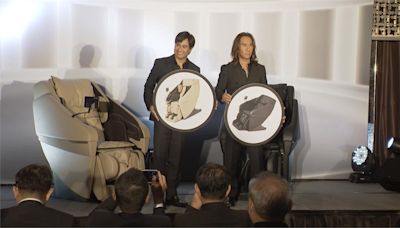高雄巨蛋 相關
廣告
搜尋結果
Kaohsiung Arena. Coordinates: 22°40′9″N 120°18′7″E. Interior of Kaohsiung Arena. The Kaohsiung Arena ( Chinese: 高雄巨蛋; pinyin: Gāoxióng Jùdàn) is an indoor sporting arena located in Zuoying District, Kaohsiung, Taiwan. It is used to host indoor sporting events. It was used as a host to some of the indoor sporting events during the 2009 World Games.
- 15,000
- Kaohsiung City Government
- 27 September 2008
Kaohsiung, [a] officially Kaohsiung City, [I] is a special municipality located in southern Taiwan. It ranges from the coastal urban center to the rural Yushan Range with an area of 2,952 km 2 (1,140 sq mi). Kaohsiung City has a population of approximately 2.73 million people as of October 2023 and is Taiwan's third most populous city and ...
- 9 m (30 ft)
- 2,951.85 km² (1,139.72 sq mi) (4th)
- 800–852
- Republic of China (Taiwan)
- History
- Methods
- Uses
- Misconception and Etymology
- Safety
- Gallery
- References
- External Links
The method for creating century eggs likely came about through the need to preserve eggs in times of plenty by coating them in alkaline clay, which is similar to methods of egg preservation in some Western cultures.The clay hardens around the egg and results in the curing and creation of century eggs instead of spoiled eggs. The century egg has at ...
Traditional
The traditional method for producing century eggs developed through improvement of the aforementioned primitive process. Instead of using only clay, a mixture of wood ash, calcium oxide, and salt is included in the plastering mixture, thereby increasing its pH and sodium content. The addition of calcium oxide and wood ash to the mixture lowers the risk of spoilage and also increases the speed of the process. A recipe for creating century eggs starts with the infusion of 1.4 kg (3 lb) of tea i...
Modern
Even though the traditional method is still widely practised, modern understanding of the chemistry behind the formation of century eggs has led to many simplifications in the recipe. Today, soaking raw eggs in a solution of table salt, calcium hydroxide and sodium carbonate for 10 days, followed by several weeks of aging in an airtight container, can achieve a similar effect to the traditional method. This is because the chemical reaction needed to produce century eggs is accomplished by int...
Century eggs can be eaten without further preparation other than peeling and rinsing them – on their own, or as a side dish. In central China, they are sliced into pieces and drizzled with some black vinegar and served as a side dish. As an hors d'œuvre, the Cantonese wrap chunks of this egg with slices of pickled ginger root (sometimes sold on a s...
Century eggs are sometimes avoided due to the belief that they are prepared by soaking eggs in horse urine, but there is no valid evidence to support this. In Thai and Lao, the common word for century egg translates to "horse urine egg", due to the distinctive urine-like odor of the food: 1. Thai: ไข่เยี่ยวม้า [kʰàjjîawmáː] (RTGS: khai yiao ma) 2. ...
Century eggs prepared in traditional ways are generally safe to consume. However, there have been incidents of malpractice in century egg production that causes eggs to be contaminated. In 2013, three factories in Jiangxi province were found to be using industrial copper sulphate in century egg production to shorten the production time. The industr...
Century egg coated in a causticmixture of mud and rice huskCentury egg showing snow-flake/pine-branch (松花, sōnghuā) patterns. These patterns are dendrites of various salts.Arranged century egg on a plateCentury egg with congeeSources
1. Ho, Mabel (1988). Chemistry Potpourri : Unlocking Chemistry through Investigations. Singapore: Toppan. ISBN 978-981-00-0454-5. 2. Taiwan Livestock Research Institute and Philippine Council for Agriculture (2001) Enhancing the Value of Eggs: How to Make Balut and Century Eggs. Retrieved 24 March 2007.
Media related to Century Eggat Wikimedia CommonsWhat links here Related changes Upload file Special pages Permanent link Page information Cite this page Get shortened URL Download QR code Part of the amusement center. Tokyo Dome City Looking from the East near Suidōbashi Station Tokyo Dome City (東京ドームシティ, Tōkyō Dōmu Shiti), referred to as Big Egg City before January 1, 2000, is an entertainment complex in Bunkyō, Tokyo ...
Nippon-Ham Fighters ( NPB) (1988–2003) [3] Tokyo Dome (東京ドーム, Tōkyō Dōmu) is an indoor stadium in Bunkyo, Tokyo, Japan. It was designed as a baseball stadium following its predecessor, Korakuen Stadium (whose former site is now occupied by the Tokyo Dome Hotel and a plaza for this stadium). In Japan, it is often used as a unit of ...
the free encyclopedia that anyone can edit. William T. Stearn (16 April 1911 – 9 May 2001) was a British botanist. Born in Cambridge, he was largely self-educated. He was head librarian at the Royal Horticultural Society 's Lindley Library in London from 1933 to 1952, and then moved to the Natural History Museum where he was a scientific ...
Otodus megalodon (/ˈmɛɡələdɒn/ MEG-əl-ə-don; meaning "big tooth"), commonly known as megalodon, is an extinct species of giant mackerel shark that lived approximately 23 to 3.6 million years ago (Mya), from the Early Miocene to the Pliocene epochs. O. megalodon was formerly thought to be a member of the family Lamnidae and a close ...






